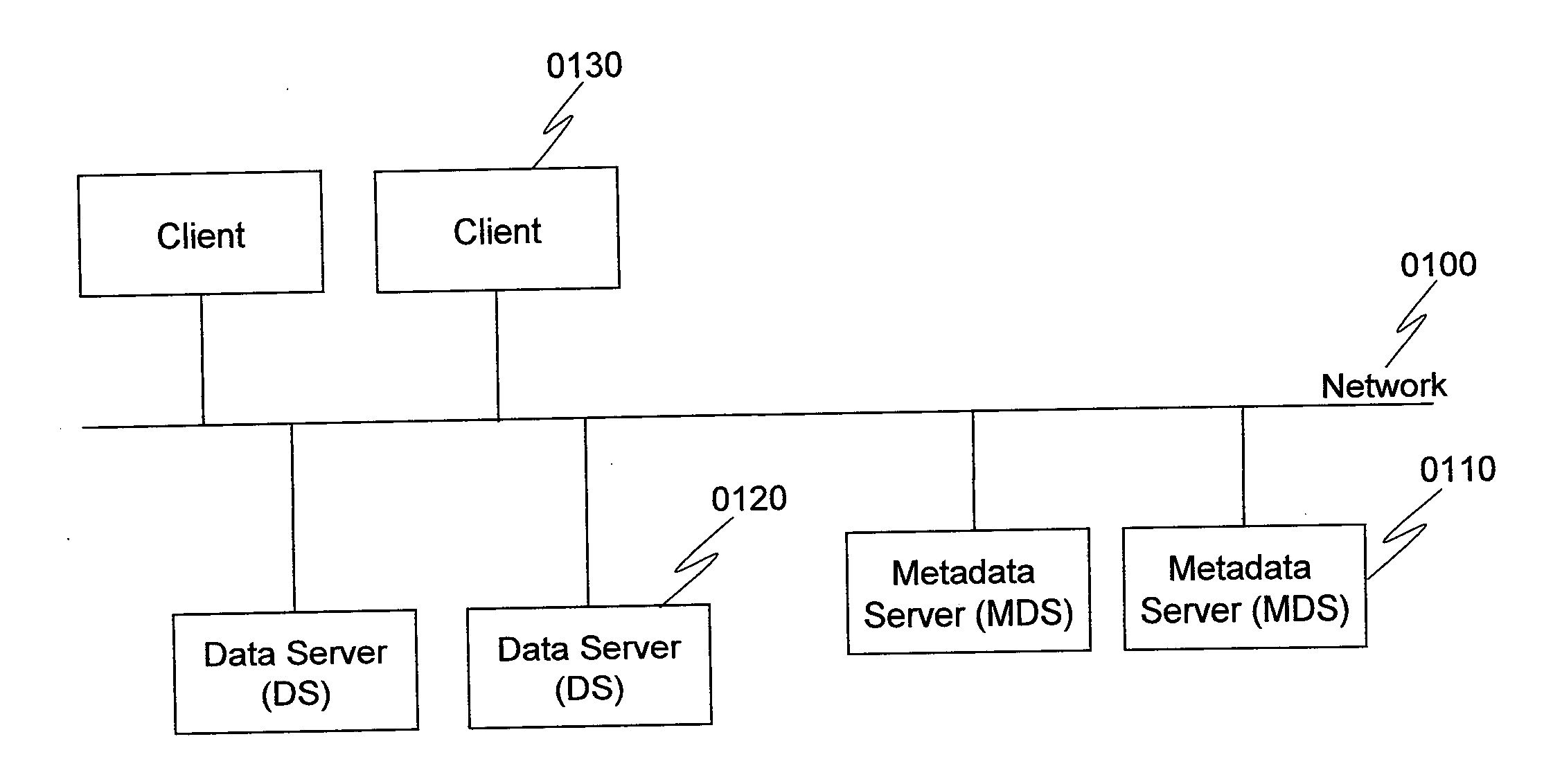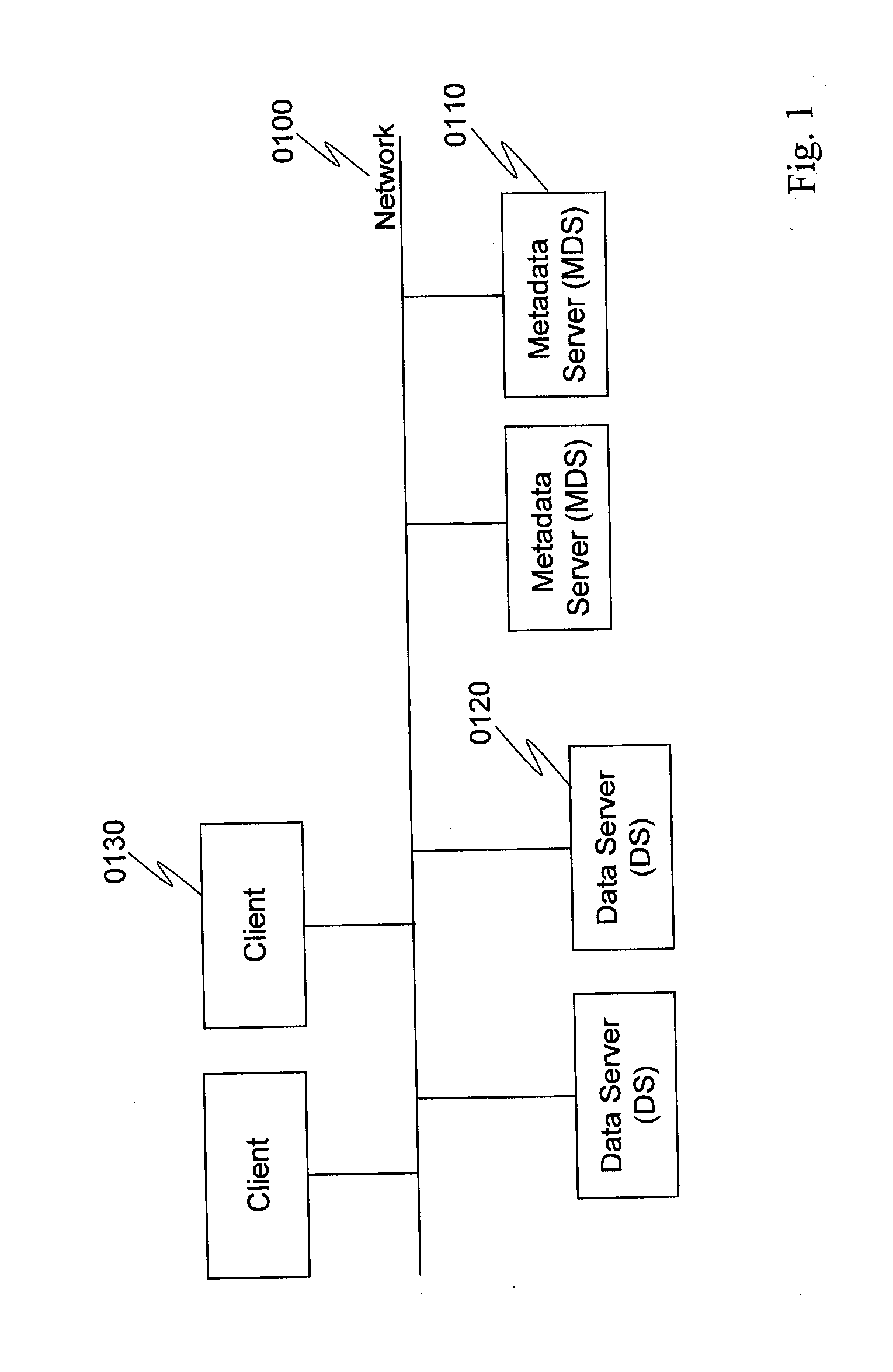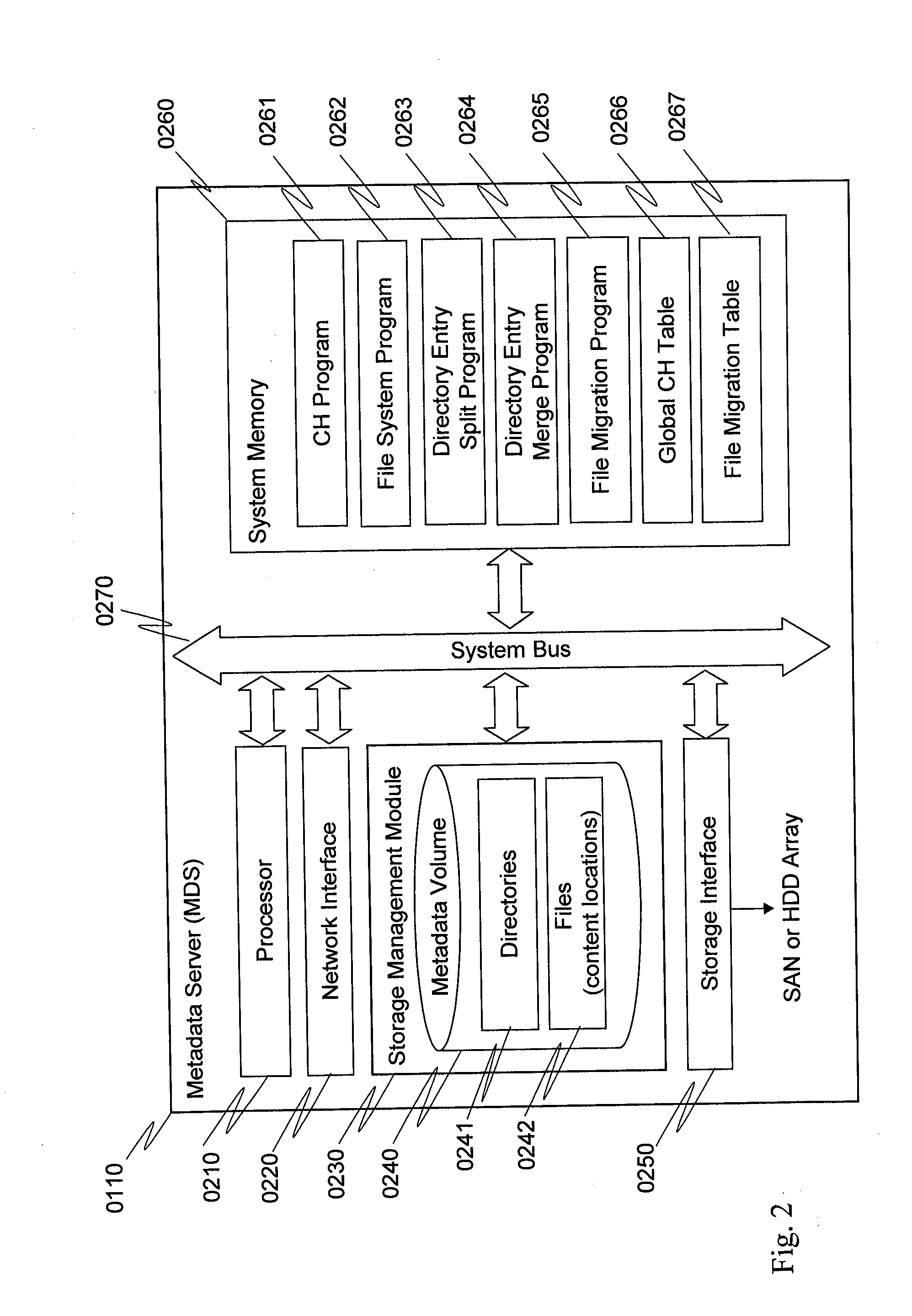Method for directory entries split and merge in distributed file system
a file system and directory entry technology, applied in the field of storage systems, can solve the problems of difficult to determine to which metadata server a directory entry should be created, the extension of this method to a distributed storage environment, and the inability to create directory entries, so as to minimize the impact of file creation performance and improve the performance of file creation
- Summary
- Abstract
- Description
- Claims
- Application Information
AI Technical Summary
Benefits of technology
Problems solved by technology
Method used
Image
Examples
embodiment 1
[0052]FIG. 1 is an exemplary diagram of an overall system according to a first embodiment of the present invention. The system includes a plurality of Metadata Servers (MDSs) 0110, Data Servers (DSs) 0120, and Clients 0130 connected to a network 0100 (such as a local area network). MDSs 0110 are the metadata servers where the file system metadata (e.g., directories and location information of file contents) are stored. Data servers 0120 are the devices, such as conventional NAS (network attached storage) devices, where file contents are stored. Clients 0130 are devices (such as PCs) that access the metadata from MDSs 0110 and the file contents from DSs 0120.
[0053]FIG. 2 is a block diagram illustrating the components within a MDS 0110. The MDS may include, but is not limited to, a processor 0210, a network interface 0220, a storage management module 0230, a storage interface 0250, a system memory 0260, and a system bus 0270. The system memory 0260 includes a CH (consistent hashing) p...
embodiment 2
[0079]A second embodiment of the present invention will be described next. The explanation will mainly focus on the differences from the first embodiment. In the first embodiment, to split directory entries, the master MDS of the directory assigns IDs to the slave MDSs in the way that each MDS in the local CH table 0850 manages an equivalent ID range (see Step 1330 of FIG. 13). Similarly, to add a new slave MDS to the local CH table 0850, the master MDS assigns an ID to the new slave MDS so that both the new slave MDS and its successor MDS manage an equivalent ID range (Step 1805 of FIG. 18). The aforementioned ID assignment does not consider the capability of each MDS (in terms of CPU power, disk IO throughput, or the combination), and may cause workload imbalance to the MDSs in the local CH table 0850. Therefore, in the second embodiment, the master MDS assigns an ID to a slave MDS based on the capability of the slave MDS.
[0080]To this end, for a local CH table 0850, a quota colum...
embodiment 3
[0083]A third embodiment of the present invention will be described in the following. The explanation will mainly focus on the differences from the first and second embodiments. In the first and second embodiments, a global CH table 0266 which consists of all the MDSs 0110 in the system is maintained by each MDS. A client 0130 has no hashing capability and does not maintain the global CH table. As the clients have no knowledge on where a directory is stored, the clients may send a directory access request to a MDS 0110 where the directory is not stored, incurring additional communication cost between the MDSs. In the third embodiment, a client can execute the same hash function as in the CH program 0261 and maintain the global CH table 0266. A client can then send a directory access request directly to the master MDS of the directory by looking up the global CH table 0266, so that communication cost between MDSs can be reduced.
PUM
 Login to View More
Login to View More Abstract
Description
Claims
Application Information
 Login to View More
Login to View More - R&D
- Intellectual Property
- Life Sciences
- Materials
- Tech Scout
- Unparalleled Data Quality
- Higher Quality Content
- 60% Fewer Hallucinations
Browse by: Latest US Patents, China's latest patents, Technical Efficacy Thesaurus, Application Domain, Technology Topic, Popular Technical Reports.
© 2025 PatSnap. All rights reserved.Legal|Privacy policy|Modern Slavery Act Transparency Statement|Sitemap|About US| Contact US: help@patsnap.com



